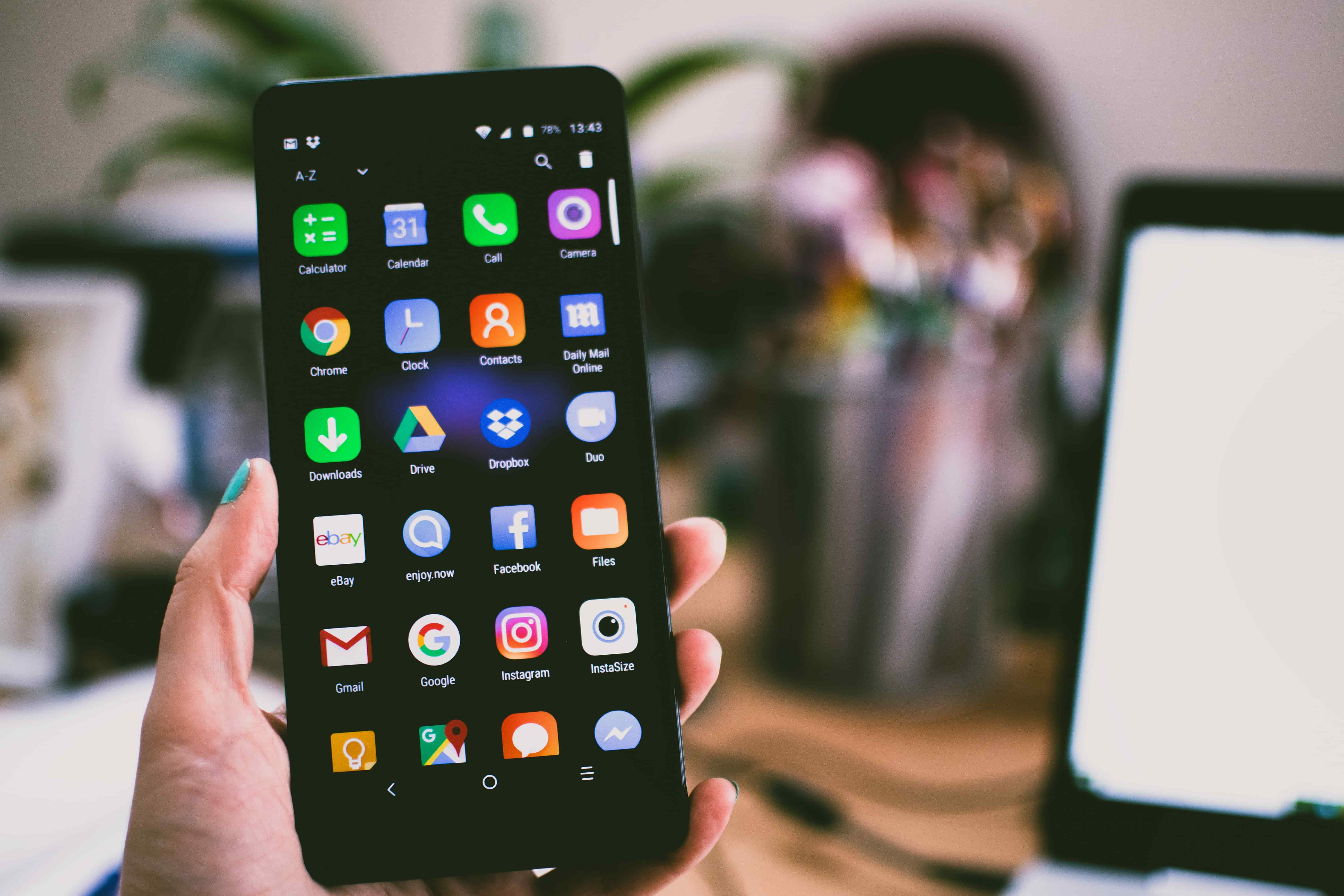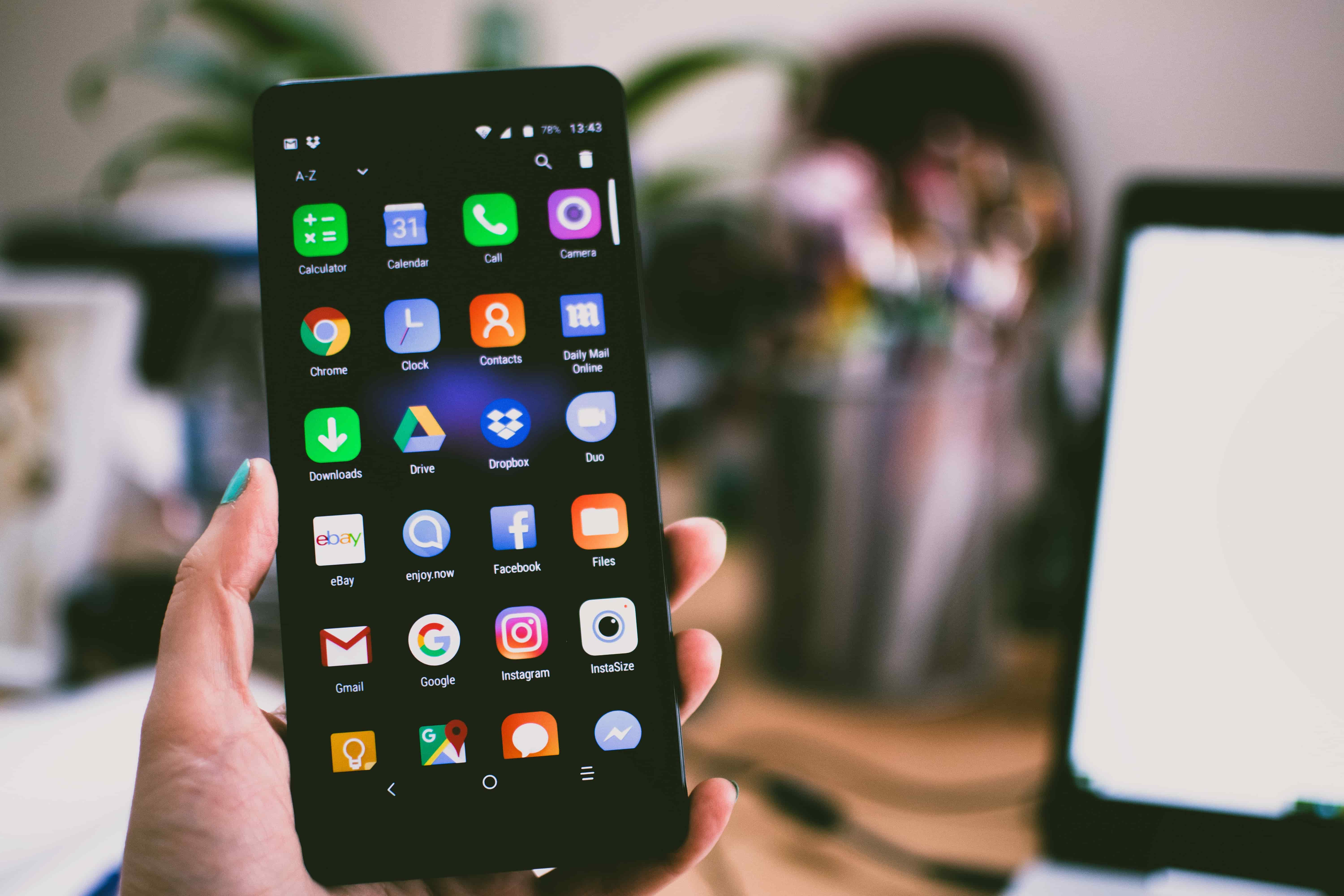
In today's fast-paced work environment, learning how to avoid distractions at work is a vital skill for maintaining productivity and focus. Modern workplaces are riddled with potential diversions, from the digital realm's constant notifications to the casual chatter of colleagues. These distractions, however small they may seem, can have a significant impact on your productivity, often leading to increased stress and decreased work quality.
The good news is, managing distractions at work is achievable with a combination of strategic practices and advanced tools. This article aims to provide you with 10+ actionable tips to effectively limit distractions at work, enabling you to maintain a laser-like focus throughout your workday.
We'll also introduce advanced solutions, like Bliink, that can significantly aid in your battle against office distractions. So, whether you're an office worker or a company manager, get ready to uncover the secrets of a distraction-free workspace.
Understanding the Common Workplace Distractions
Digital Distractions: Social Media, Email, and Notifications
Mastering how to limit distractions at work starts by identifying the main culprits. Within the landscape of contemporary workspaces, social media, emails, and constant notifications reign as major distractions.
Social media platforms are designed to captivate our attention, and their addictive nature can often make us lose track of time. Whether it's a quick scroll on Instagram, an update on Facebook, or a tweet on Twitter, these seemingly innocent checks can accumulate into significant chunks of wasted time.
Similarly, the constant ping of emails and other notifications can disrupt our workflow. In fact, studies show that it takes an average of 23 minutes to regain focus after a distraction. While these tools are essential for communication and staying updated, they can significantly interfere with productivity if not managed properly. We'll explore effective strategies for managing these digital distractions later in the article.
Office Distractions: Meetings, Chatty Colleagues, and Interruptions
While digital disturbances can be significant, office distractions pose an equal, if not greater, challenge when figuring out how to avoid distractions at work. Meetings, whether impromptu or planned, often disrupt the flow of work. Though necessary for coordination and decision-making, meetings can become a hindrance if not managed efficiently.
Similarly, sociable or excessively chatty colleagues, while contributing to a lively office culture, can lead to unwanted interruptions. These interpersonal distractions can break your concentration, making it challenging to regain your focus.
Unplanned interruptions, such as urgent queries or unexpected tasks, also add to the mix of office distractions. Effectively managing distractions at work requires recognizing these issues and establishing boundaries or strategies to limit their impact. The subsequent tips in this article will provide valuable insights to assist you in doing so.
Personal Distractions: Stress, Fatigue, and Boredom
While digital and office distractions are quite prevalent, it's crucial not to overlook the role of internal, personal factors in limiting our focus. Stress, fatigue, and boredom can significantly impact our ability to stay focused and productive. Stress can put our minds in a state of constant alertness, making it difficult to concentrate on specific tasks. It's like running a program in the background of your computer that takes up vital processing power, slowing everything else down.
Meanwhile, fatigue, whether mental or physical, diminishes our cognitive functions, making us more susceptible to distractions. It's like trying to work with a low battery - the performance inevitably dips. Regular rest and sleep are vital to recharge and maintain our focus throughout the workday.
Boredom is also a stealthy productivity killer. When tasks lack stimulation or become monotonous, our minds tend to wander in search of more engaging activities. The challenge here is in finding ways to make routine tasks more interesting or interspersing them with more stimulating work. To help keep employees engaged and satisfied, consider these 10 practical methods for enhancing employee satisfaction.
These personal distractions underscore the importance of self-care and work engagement in how to limit distraction at work. Managing distractions at work isn't just about controlling our external environment - it also involves managing our internal state.


6. Browser Extensions
As you delve into the world of digital tools for managing distractions, browser extensions are worth considering. These digital assistants play a crucial role in reducing online clutter, thereby enhancing your productivity.
One of the ways to achieve this is by leveraging extensions that block distracting websites during your work hours. Such a feature comes in handy when you want to prevent your focus from drifting towards non-work-related sites.
Moreover, some extensions help keep your browsing environment clean and straightforward by eliminating unnecessary ads and pop-ups. Remember, a cleaner workspace, even a digital one, can significantly improve your focus and productivity.
While there are several tools that offer these features, it's essential to find one that fits your specific needs. The key to effective distraction management is not just blocking out the noise but also focusing on what truly matters. By utilizing these tools, you can create a digital work environment that encourages productivity and minimizes distractions.
7. Hardware Solutions
When figuring out how to avoid distractions at work, don't overlook the power of hardware solutions. One particularly impactful option is noise-canceling headphones. They can prove invaluable, especially in a bustling office environment or if you're working remotely with ambient noise around.
Noise-canceling headphones work by creating an "anti-noise" wave that counteracts background noise, providing you with a more serene auditory environment. They can help you:
- Isolate from surrounding chatter, machinery noise, or street sounds.
- Increase your focus by providing a quieter work environment.
- Listen to music or white noise without cranking up the volume and potentially damaging your hearing.
By minimizing auditory distractions, these headphones can significantly enhance your concentration, making it easier to understand how to limit distraction at work.
Managing Workplace Distractions in Collaborative Settings
8. Team Culture
Developing a productive team culture is an effective strategy on how to avoid distractions at work, especially in collaborative settings. A culture that values focus and productivity can naturally reduce the frequency of unnecessary interruptions.
Building trust within your team is a key factor. When team members trust each other's abilities, they feel more comfortable working independently without needing constant check-ins, which can be a source of distraction. Here are some ways to foster such a culture:
- Encourage open communication: Make sure team members feel comfortable discussing their workloads and potential distractions.
- Promote autonomy: Allow team members to have some control over their tasks and schedules. This can help them manage their work in a way that minimizes distractions.
- Acknowledge focused work: Celebrate instances of high focus and productivity to encourage similar behavior across the team.
By cultivating a team culture that values productivity and discourages unnecessary distractions, you can make a significant stride in managing how to limit distraction at work.


Techniques for Avoiding Workplace Distractions
1. Time Management
Learning how to avoid distractions at work often begins with mastering time management. By strategically prioritizing tasks, you can tackle the most important and demanding tasks when your focus is at its peak, usually during the start of the workday. One effective strategy is to use the Eisenhower Matrix, a tool that helps you decide on and prioritize tasks by urgency and importance, sorting out less urgent and important tasks which you should either delegate or not do at all.
Scheduling regular breaks is another essential part of effective time management. It's a common misconception that one needs to work continuously for long hours to increase productivity. Contrarily, studies have shown that short, scheduled breaks can enhance overall productivity and creativity.
The Pomodoro technique, for instance, advocates working in blocks of time (typically 25 minutes), followed by a 5-minute break. This approach not only helps to maintain a high level of focus but also limits the impact of fatigue and stress, reducing personal distractions.
2. Environmental Changes
Creating a distraction-free workspace is another practical way to avoid distractions at work. Your environment significantly influences your ability to concentrate, so it's worthwhile to invest time in organizing your workspace. Declutter your desk, ensuring only the essentials are within reach. Too many items can act as visual distractions, subtly pulling your attention away from your tasks.
Consider the noise level in your workspace as well. If you're in an open office or a noisy environment, using noise-canceling headphones can create a personal quiet zone. Alternatively, if allowed, you could play soft, ambient music or white noise to drown out distracting sounds.
Lighting also plays a role in your focus. Natural light has been shown to improve mood and productivity, so if possible, choose a spot near a window. If natural light isn't an option, ensure your workspace is well-lit with good-quality artificial light to avoid eye strain and maintain alertness. Managing distractions at work involves physical aspects too, and these environmental changes can significantly improve your focus.
3. Mindset Shifts
Tackling distractions often requires a deeper internal change. Cultivating a mindset centered on focus and productivity can be instrumental in managing distractions at work. Recognize that distractions aren't always the primary issue; sometimes, it's our willingness to be drawn towards them that needs addressing.
Procrastination, for instance, can be a manifestation of this. Building mental resilience against procrastination involves awareness of its triggers and developing strategies to combat it. This could mean breaking down large tasks into manageable parts or using positive reinforcement to reward yourself for staying on track. Also, consider adopting mindfulness techniques or meditation as they can help enhance focus and train your mind to stay in the present moment, limiting the power distractions have over you.
Remember - A mindful employee is a focused employee!
4. Scheduling
In the quest to avoid distractions at work, having a well-structured schedule is a powerful tool. Planning your day in advance can create a clear roadmap to accomplish tasks effectively. Start by defining your daily objectives, focusing on the most significant tasks that align with your broader goals. Remember to be realistic because overloading your schedule can lead to additional stress.
Use tools like digital calendars or task management apps to keep track of deadlines and monitor progress. Block out specific times for individual tasks, and stick to these time slots rigorously. This technique, known as time blocking, can significantly enhance your focus and productivity.
Also, include breaks in your schedule - short respites can refresh your mind and help maintain a consistent level of performance throughout the day. By adhering to a well-structured schedule, you can limit distractions at work and boost your overall productivity.
Technology Tools and Apps for Staying Focused
5. Productivity Apps
Harnessing technology can be a game-changer when figuring out how to avoid distractions at work. Among the wealth of available tools, productivity apps play a crucial role in enhancing focus and managing distractions. These apps fall into various categories, including task managers, focus timers, and break notifiers.
Task managers help you keep track of your work, set deadlines, and prioritize tasks. They serve as virtual to-do lists, making it easier for you to stay organized and manage your workload.
Focus timers, inspired by the Pomodoro Technique, encourage you to work in concentrated bursts with regular breaks. Such apps promote efficiency and help prevent burnout.
Break notifiers are another class of productivity apps. They remind you to take regular breaks, a vital aspect of maintaining your mental agility and avoiding fatigue-induced distractions.
However, if you're looking for an all-in-one solution, consider Bliink. It helps to build healthy working habits with computers and mitigate eye and posture-related health problems. And as a result, boosts productivity by up to 20%.
The science behind Bliink explores the impact of small repetitive actions in the habit-building process.


6. Browser Extensions
As you delve into the world of digital tools for managing distractions, browser extensions are worth considering. These digital assistants play a crucial role in reducing online clutter, thereby enhancing your productivity.
One of the ways to achieve this is by leveraging extensions that block distracting websites during your work hours. Such a feature comes in handy when you want to prevent your focus from drifting toward non-work-related sites.
Moreover, some extensions help keep your browsing environment clean and straightforward by eliminating unnecessary ads and pop-ups. Remember, a cleaner workspace, even a digital one, can significantly improve your focus and productivity.
While there are several tools that offer these features, it's essential to find one that fits your specific needs. The key to effective distraction management is not just blocking out the noise but also focusing on what truly matters. By utilizing these tools, you can create a digital work environment that encourages productivity and minimizes distractions.
7. Hardware Solutions
When figuring out how to avoid distractions at work, don't overlook the power of hardware solutions. One particularly impactful option is noise-canceling headphones. They can prove invaluable, especially in a bustling office environment or if you're working remotely with ambient noise around.
Noise-canceling headphones work by creating an "anti-noise" wave that counteracts background noise, providing you with a more serene auditory environment. They can help you:
- Isolate from surrounding chatter, machinery noise, or street sounds.
- Increase your focus by providing a quieter work environment.
- Listen to music or white noise without cranking up the volume and potentially damaging your hearing.
By minimizing auditory distractions, these headphones can significantly enhance your concentration, making it easier to understand how to limit distraction at work.
Managing Workplace Distractions in Collaborative Settings
8. Team Culture
Developing a productive team culture is an effective strategy on how to avoid distractions at work, especially in collaborative settings. A culture that values focus and productivity can naturally reduce the frequency of unnecessary interruptions.
Building trust within your team is a key factor. When team members trust each other's abilities, they feel more comfortable working independently without needing constant check-ins, which can be a source of distraction. Here are some ways to foster such a culture:
- Encourage open communication: Make sure team members feel comfortable discussing their workloads and potential distractions.
- Promote autonomy: Allow team members to have some control over their tasks and schedules. This can help them manage their work in a way that minimizes distractions.
- Acknowledge focused work: Celebrate instances of high focus and productivity to encourage similar behavior across the team.
By cultivating a team culture that values productivity and discourages unnecessary distractions, you can make a significant stride in managing how to limit distraction at work.


9. Clear Communication
In the quest to master how to avoid distractions at work, fostering clear communication is a pivotal element, particularly in a team setting. It's important to create an environment where team members feel comfortable expressing their concerns about distractions and proposing solutions. Open discussions about individual and collective distractions can lead to actionable changes that improve focus for everyone.
For instance, if frequent impromptu meetings disrupt the workflow of a majority of the team, it should be addressed openly. Propose alternatives like scheduling regular check-ins or using collaborative tools that allow asynchronous updates. Encourage team members to voice their concerns and ideas, and be open to change.
Remember, it's not just about eliminating distractions but also about fostering a culture of collaboration and understanding. When everyone feels heard and respected, it's easier to make collective changes that benefit the whole team.
10. Scope of Work
In collaborative environments, the importance of a well-defined scope of work cannot be overstated. This clearly delineated framework outlines the tasks, deadlines, and goals of a project, serving as a guiding light for the team's efforts.
Ensuring each team member has a clear understanding of their role and responsibilities can significantly reduce confusion and the potential to be drawn away by tasks outside of their assigned areas. Likewise, establishing clear deadlines for each phase of the project can maintain team focus and discourage procrastination.
Furthermore, communicating the overall objectives of the project is crucial. When the team knows what they're working towards, they are more likely to be motivated and less likely to entertain unrelated ideas or tasks. This clear, defined structure provides focus, enabling the team to concentrate on what's essential and disregard potential distractions, ensuring efficient progress.
11. Meeting Guidelines
To further prevent distractions in a team setting, one must understand how to avoid distractions at work during meetings. Ineffective or unstructured meetings can quickly become a major source of distraction, hindering productivity. By establishing clear meeting guidelines, you can ensure that meetings remain focused and efficient.
- Agenda: Before any meeting, circulate a clear agenda outlining the topics to be discussed. This step keeps discussions on track and prevents the introduction of irrelevant or off-topic distractions.
- Time Limit: Set a strict time limit for meetings. This constraint encourages concise, focused discussions and dissuades unnecessary tangents.
- Participation: Encourage active participation from all attendees. Engaged participants are less likely to be distracted and more likely to contribute meaningful ideas.
By adhering to these guidelines, you ensure that meetings become a tool for productivity rather than a source of distraction, aiding in the process of how to limit distraction at work.
The Final Thoughts
Mastering how to avoid distractions at work is a journey that requires both strategic approaches and powerful tools. The techniques we've discussed offer a roadmap towards a more productive, distraction-free and healthy workspace.
However, the journey doesn't stop there. In the pursuit of enhanced focus and productivity, technology such as Bliink emerges as a powerful ally. By assisting in the management of physical stress, mitigating the adverse effects of prolonged computer usage, and fostering productivity, this software proves to be a highly effective partner.
Remember, learning to avoid distractions at work is about embracing strategies that work for you and continuously adapting them to your evolving needs.
Invest in science and experience the benefits yourself!
Stay focused, and stay productive!
